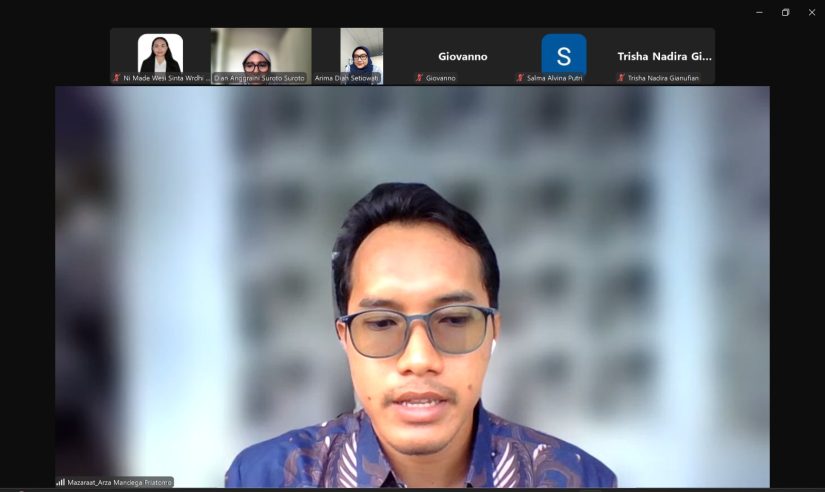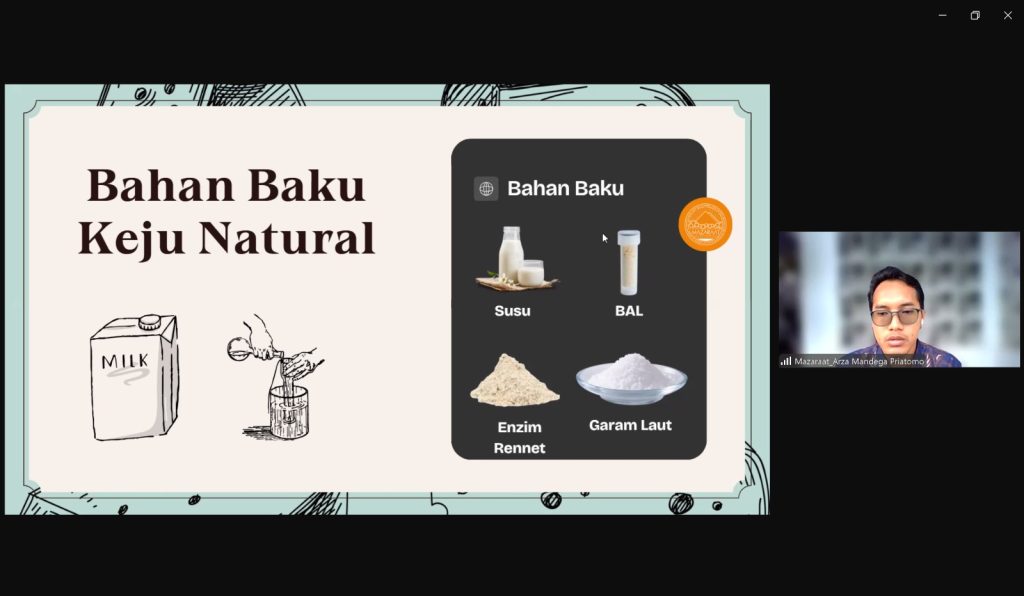
As part of the Dairy Processing Technology course, the Department of Food and Agricultural Product Technology (TPHP) at Universitas Gadjah Mada (UGM) hosted a guest lecture featuring Azra Mandega Priatomo, S.T.P., Production Manager at PT Mazaraat Lokanatura Indonesia. The session focused on the technology behind natural cheese production—an area of growing interest in the dairy industry.

The lecture began with an introduction to the fundamentals of natural cheese, designed to help students understand how it differs from processed cheese, which is more commonly found in the market. Azra also shared the historical background and global evolution of cheese, highlighting how the industry has grown to encompass thousands of cheese varieties worldwide.
Following the historical overview, Azra explained the key raw materials used in natural cheese production: fresh milk, lactic acid bacteria, rennet enzymes, and sea salt. He then detailed the step-by-step production process, including milk treatment, fermentation, coagulation, curd handling, molding, and ripening.
The lecture also covered specific techniques that influence cheese quality and texture. For example, the stretching process—used to create elastic, stringy textures—and cooking the curd, which helps reduce moisture content, were both discussed in detail, providing students with new technical insights into cheese processing.
The session concluded with a discussion on cheese spoilage, particularly issues such as early blowing, caused by the growth of Coliform bacteria, and late blowing, associated with Clostridium tyrobutyricum. These microbial issues pose challenges in cheese quality control and require careful handling during production.
This guest lecture not only broadened students’ understanding of natural cheese and dairy processing technologies but also illustrated real-world applications within local industry contexts. It aligned closely with Sustainable Development Goal 4 (Quality Education) by delivering hands-on, relevant knowledge to future food technologists.
Written by: Firstnandita K.
